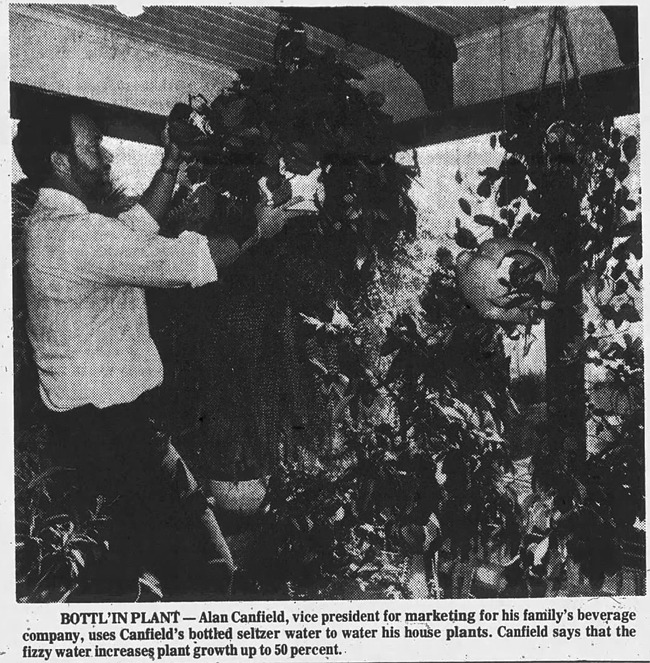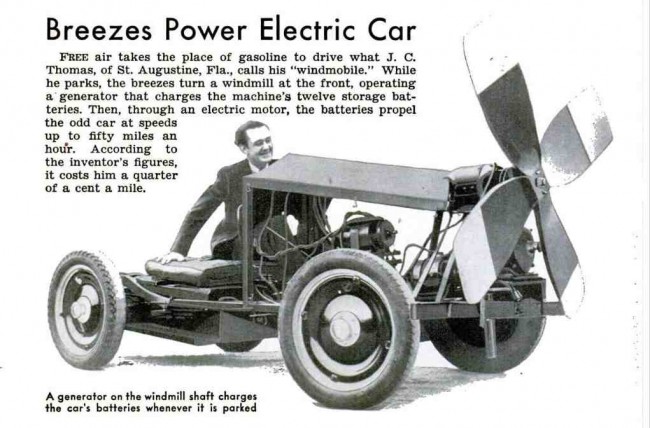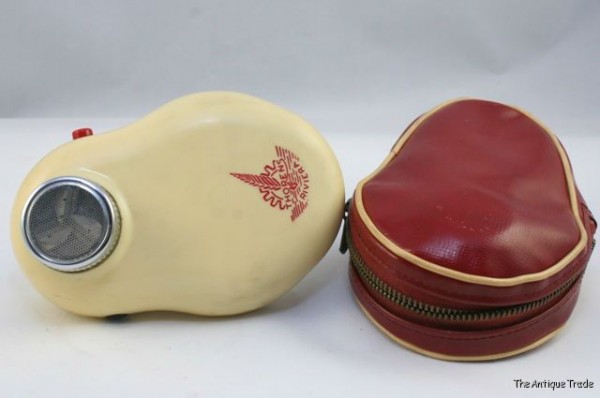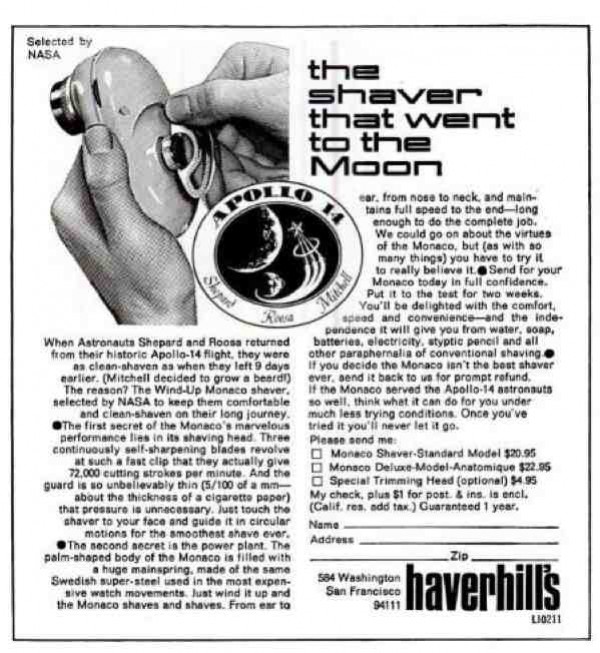Environmentalism and Ecology
Carbon-Negative Perfume
The Air Company is developing technology to make aviation fuel directly from CO2. As a side gimmick, they also used their technology to make ethanol from CO2, which they then used as a base for a perfume. They claimed it was "the world’s first carbon-negative fragrance."I wonder what makes it carbon negative, as opposed to carbon neutral?
From what I understand, ethanol made from plants would be carbon neutral if it weren't for the energy used to process the plants into fuel. Because plants take in carbon as they grow, and this carbon is then released again when the fuel is burned.
The Air Company specifies that they used only wind and solar energy to make the ethanol. But even so, once someone uses the fragrance, the carbon will be released into the atmosphere again. Doesn't that make it carbon neutral, rather than negative?
More info: aircompany.com

Posted By: Alex - Mon Aug 19, 2024 -
Comments (4)
Category: Environmentalism and Ecology, Perfume and Cologne and Other Scents
Sedimentary Geology and the Civil War
I'm sure Hippensteel's new book (Sand, Science, and the Civil War) is quite interesting (especially if you're a Civil War buff), but the extreme narrow focus of his argument made me laugh. From a review:More info: University of Georgia Press

Posted By: Alex - Fri Dec 01, 2023 -
Comments (4)
Category: War, Environmentalism and Ecology, Books, Nineteenth Century
Using an atomic water cannon to change the earth’s orbit
Back in the early 1970s, engineer William Peterson proposed builing a gigantic, atomic-powered water cannon in the Mojave Desert and blasting ocean water out of it. He claimed this would not only create rain to water the desert, but would also change earth's orbit, in a beneficial way. Eventually, he said, we could even use the cannon to move the earth to a new solar system!I've got two questions: 1) Would salt water shot up into the atmosphere come back down as fresh water? and 2) How big would you have to make something like this to actually move the earth?

Logan Herald-Journal - Nov 23, 1971
Text below from a Nov 1971 UPI article:
By Robert E. Sweet
SEATTLE (UPI) — William E. Peterson wants to erect what amounts to a giant atomic water pistol in the Mojave Desert, shoot it off and change the orbit of the earth.
Or, as Peterson himself once put it in an edition of a local Rotary Club bulletin which he edits: "Some weirdo hereabouts is campaigning for a project to fly the earth."
Peterson is a 40-year-old structural engineer who works mainly on dams and bridges. He has a sense of humor and can understand why some people might think he's a crackpot. But he is dead serious about his "earth sailing" project," which he has tried to sell to everyone from President Nixon to the Sierra Club to private foundations.
PLAN DETAILED
Peterson's plan is to build a nuclear cannon, a mile in diameter at the base, tapering off to a narrow nozzle on top. With an atomic blast that he estimates would be equal to about one million tons of TNT he would force a piston mechanism to shoot sea water out the top of the cannon at terrific speed.
He figures about 10 per cent of the water vapor would escape earth's gravity and the spray would nudge the planet's orbit in the same way jets propel a spacecraft.
The water that remained in the atmosphere, Peterson said in an interview, would act like a "giant sprinkler system" and create rain to water the Mojave Desert.
CITES PREDICTIONS
A new orbit would improve the world's climate, ease pollution problems and "put some life into Death Valley," he said.
"Some reputable scientists say we're in for another ice age in the year 2000," Peterson said, in an interview, noting that others predict all sorts of ecological disasters on the horizon.
"So some day — and maybe not too far in the future — we're going to have to know how to control the orbit to maintain at least the quality of life we know now.
"If we can't do it this way sailing "Our Great Ship Earth," how are we going to do it?"
Peterson said other potential benefits of his proposal include: — Turning the globe into a giant spacecraft and flying it to another sun when our sun burns out, which scientists estimate will be in about 5 billion years.
— Applying the same technology to other planets to bring them closer to the sun for more living space for earthlings.
— Replacing dams with sea water cannons for the sake of electrical power.
— Desalinating sea water.
EASE NATIONALISM
— Easing the excesses of nationalism by fostering a sense of international cooperation in working on the project.
Peterson said the cannon would not necessarily have to be used to alter the earth's orbit. A smaller blast of water would be just a rainmaker and the water that did not leave the structure could drive power pistons to supply electric energy. Or, a nozzle at the top could be directed in such a way as to squelch forest fires.
His plan has been a personal project with Peterson for 13 years, but only in the last few years has he begun promoting it. Among those to whom he has divulged his plan are: President Nixon, the National Aeronautics and Space Administration (NASA), the U.S. Department of Commerce, the Atomic Energy Commission, the Sierra Club, Sen. Henry Jackson, D-Wash., Washington Gov. Dan Evans, and a few private foundations.
REJECTED BY NASA
NASA rejected the plan because its political and ecological implications were beyond the scope of the agency. H. Dale Grubb, NASA's assistant administator for legislative affairs, wrote Peterson:
"It would be presumptuous and inappropriate for one nation or an agency of one nation to speculate on the accomplishment of such a project."
Brock Evans, a spokesman for the conservation-dedicated Sierra Club, replied: "Death Valley, as you know, is a national monument at the present time. Our viewpoint is that we don't always need to make the desert bloom."
Donald F. Moore, an assistant administrator of the U.S. Department of Commerce, Environmental and Science Services Administration, wrote Peterson:
"The President has asked me to review the proposal ... and give you my comments.
"Your idea of changing the orbit of the earth as a means of controlling climate and distribution of rainfall is most intriguing and certainly represents highly creative thinking on your part.
ELASTIC MEDIUM
"Experience has shown, however, that the atmosphere is a very elastic medium, and thus instead of blowing out into space like the exhaust from a rocket, it absorbs the energy and momentum from a nuclear blast and eventually returns it to the earth so that no actual motion of the earth takes place."
Peterson answered these doubts saying: "actually it would be impossible to draw this conclusion since no one has thought of the type of device I have proposed."
He believes his proposal "warrants a feasibility study," even if admittedly it is a "real futuristic idea."
"I don't feel the (federal officials) gave it a fair shake. They just discounted the ideas and did not by any means prove they wouldn't work."
Peterson said he is gaining support locally and would attempt to win voter approval by going from state to state, campaigning.
And, he added, at least his children are convinced the plan would work — they call him "Earth Pilot No. 1."
Posted By: Alex - Wed Nov 09, 2022 -
Comments (4)
Category: Really Bad Ideas, Spaceflight, Astronautics, and Astronomy, Environmentalism and Ecology, 1970s
The Aeolus Wind Car Competition
The event got cancelled in 2020, but plans to resume this year.Forty seconds of narration in French preface this second video.
Posted By: Paul - Sun Jan 10, 2021 -
Comments (2)
Category: Contests, Races and Other Competitions, Technology, Environmentalism and Ecology, Cars
The Wombles
Their Wikipedia page.

Posted By: Paul - Sat Dec 26, 2020 -
Comments (1)
Category: Cryptozoology, Fey, Twee, Whimsical, Naive and Sadsack, Television, Environmentalism and Ecology, Stop-motion Animation, 1970s
“The Fish” by PES
Posted By: Paul - Sat Jun 27, 2020 -
Comments (0)
Category: Animals, PSA’s, Environmentalism and Ecology, Stop-motion Animation
Does seltzer water help plants grow?
In 1980, Canfield's natural seltzer launched a campaign to promote its product as being great for watering house plants. It printed on its labels: "We recommend our natural seltzer for house plants."Could there have been any truth to this claim? Is seltzer water actually good for plants? Well, the only vaguely scientific study I can find addressing this claim (after, admittedly, only a brief search) was a student project conducted at the University of Colorado Boulder in 2002. The student researchers concluded, "Plants given carbonated water not only grew faster but also developed a healthier shade of green in comparison to plants given tap water."
So, maybe Canfield's was onto something. However, if you're thinking of treating your plants to some seltzer water, I imagine you'd want to use water at room temperature, not refrigerated. Cold water might shock their systems.

Marysville Journal-Tribune - June 9, 1980

Owensboro Messenger-Inquirer - May 19, 1980
Posted By: Alex - Thu Jul 19, 2018 -
Comments (12)
Category: Nature, Science, Environmentalism and Ecology, Experiments, 1980s
Windmill Car

Ecowarriors love 1) electric cars and 2) wind turbines. A stroke of genius to combine the two!
Original article here.
Posted By: Paul - Sun May 24, 2015 -
Comments (2)
Category: Environmentalism and Ecology, 1940s, Cars
Windup Razors


Once upon a time, in a simpler age when electricity was expensive or balky, windup razors were popular in Europe and Russia.

In the Space Age, you could even buy the NASA-approved version!
But except for vintage models (a mere $100.00), purely mechanical razors seem to have vanished from the marketplace. Although in this era of environmentalism, it seems they should fulfill a certain demand.

The closest such product I can find cheats by using electricity--though it is hand-cranked!
Posted By: Paul - Wed Oct 09, 2013 -
Comments (10)
Category: Inventions, Technology, Environmentalism and Ecology, Facial Hair

| Who We Are |
|---|
| Alex Boese Alex is the creator and curator of the Museum of Hoaxes. He's also the author of various weird, non-fiction, science-themed books such as Elephants on Acid and Psychedelic Apes. Paul Di Filippo Paul has been paid to put weird ideas into fictional form for over thirty years, in his career as a noted science fiction writer. He has recently begun blogging on many curious topics with three fellow writers at The Inferior 4+1. Contact Us |




